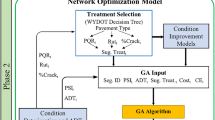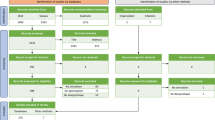Abstract
Some of the major advances in the field of mining in the last three decades have referred to the development of new design and planning techniques for optimizing open-pit mining and the inclusion of a stochastic perspective in economic models that is more revealing than a purely deterministic perspective. These advances include the use of parametric techniques in the design and planning process, the formulation of criteria for establishing an optimum cut-off grade policy when the economic goal is to optimize net present value (NPV), and the introduction of economic risk analysis. This paper examines some of the difficulties involved in applying these techniques—arising largely as a result of a lack of knowledge of the spatial location and distribution of the deposit grades—and analyses how these difficulties can be tackled with the help of geostatistical simulation techniques that take probabilistic criteria into consideration during the optimization process. These techniques enable equally likely representations of the deposit to be obtained that reproduce the main dispersion features for the starting experimental data (covariance or variogram, as well as the histogram). Consequently, the uncertainty in regard to the deposit as well as its influence on the economic assessment of the deposit in risk terms can be evaluated. This paper also describes a simple method for introducing price and cost increases into the risk analysis via the Monte Carlo method and shows how geological, technical and economic uncertainty can be integrated in risk analyses. Although it is true that the relationship between prices and costs is maintained constant in mining planning based on using parametric techniques, it is no less true that the risk analysis requires the use of models in which the main parameters with a bearing on deposit economics are considered as stochastic variables. The proposed methodology simplifies the calculations and easily integrates the different sources of uncertainty.








Similar content being viewed by others
Notes
It is hardly surprising that important changes are taking place in the slate mining industry, including the use of mechanical cutting systems instead of explosives to remove the slate and the mechanization of the slate preparation processes.
References
Bastante FG, Taboada J, Ordóñez C (2004) Design and planning for slate mining using optimisation algorithms. Amsterdam Eng Geol 73:93–103
Bastante FG, Taboada J, Alejano LR, Ordóñez C (2005) Evaluation of the resources of a slate deposit using indicator kriging. Amsterdam Eng Geol 81:407–418
Dagdelen K, Francois-Bongarcon D (1982) Towards the complete double parameterization of recovered reserves in open pit mining. In: Proceedings of 17th international APCOM symposium, pp 288–296
Deutsch C, Journel AG (1992) GSLIB. Geostatistical software library and user`s guide. Oxford University Press, New York
Dimitrakopoulos R, Farrelly C, Godoy M (2002) Moving forward from traditional optimisation: grade uncertainty and risk effects in open pit mine design. Trans IMM Sect A Min Ind 111:A82–A89
Lane KF (1988) The economic definition of ore. Mining Journal Books, London
Lemieux M (2000) Parametric analysis in surface-mine reserve definition: the inherent error and its correction. Min Eng 52:57–64
Lerchs H, Grossmann IF (1965) Optimum design of open-pit mines. CIM bulletin 58. N° 633. pp 47–54
Matheron G (1962) Traité de Géostatistique Appliquée. Tome 1. París, Edit. Technip
Ramazan S, Dagdelen K (1998) A new push back design algorithm in open pit mining. Galgary. In: Proceedings of 7th international symposium on mine planning and equipment selection, pp 119–124
Runge IC (1998) Mining economics and strategy. Society for Mining, Metallurgy and Exploration, USA
Taboada J, Vaamonde A, Saavedra A, Alejano L (1997) Application of geostatistical techniques to exploitation planning in slate quarries. Amsterdam Eng Geol 47:269–277
Taboada J, Vaamonde A, Saavedra A, Argüelles A (1998) Quality index for ornamental slate deposits. Amsterdam Eng Geol 50:203–210
Whittle J (1988) Beyond optimization in open-pit design. 1st Canadian conference on computer applications in the mineral industry. Laval University, Quebec City, pp 331–337
Acknowledgment
Our thanks to the EU-ERDF programme for funding this research via Project 1FD97–0091.
Author information
Authors and Affiliations
Corresponding author
Rights and permissions
About this article
Cite this article
Bastante, F.G., Taboada, J., Alejano, L. et al. Optimization tools and simulation methods for designing and evaluating a mining operation. Stoch Environ Res Risk Assess 22, 727–735 (2008). https://doi.org/10.1007/s00477-007-0182-6
Published:
Issue Date:
DOI: https://doi.org/10.1007/s00477-007-0182-6




